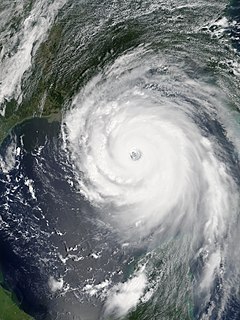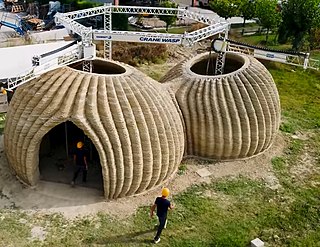
The Federal Emergency Management Agency (FEMA) is an agency of the United States Department of Homeland Security (DHS), initially created under President Jimmy Carter by Presidential Reorganization Plan No. 3 of 1978 and implemented by two Executive Orders on April 1, 1979. The agency's primary purpose is to coordinate the response to a disaster that has occurred in the United States and that overwhelms the resources of local and state authorities. The governor of the state in which the disaster occurs must declare a state of emergency and formally request from the President that FEMA and the federal government respond to the disaster. The only exception to the state's gubernatorial declaration requirement occurs when an emergency or disaster takes place on federal property or to a federal asset—for example, the 1995 bombing of the Alfred P. Murrah Federal Building in Oklahoma City, Oklahoma, or the Space Shuttle Columbia in the 2003 return-flight disaster.
A humanitarian crisis is defined as a singular event or a series of events that are threatening in terms of health, safety or well-being of a community or large group of people. It may be an internal or external conflict and usually occurs throughout a large land area. Local, national and international responses are necessary in such events.

Hurricane Katrina was a large and destructive Category 5 Atlantic hurricane that caused over 1,800 fatalities and $125 billion in damage in late August 2005, especially in the city of New Orleans and the surrounding areas. It was at the time the costliest tropical cyclone on record and is now tied with 2017's Hurricane Harvey. The storm was the twelfth tropical cyclone, the fifth hurricane, and the third major hurricane of the 2005 Atlantic hurricane season, as well as the fourth-most intense Atlantic hurricane on record to make landfall in the contiguous United States.

As the center of Hurricane Katrina passed southeast of New Orleans on August 29, 2005, winds downtown were in the Category 1 range with frequent intense gusts. The storm surge caused approximately 23 breaches in the drainage canal and navigational canal levees and flood walls. As mandated in the Flood Control Act of 1965, responsibility for the design and construction of the city's levees belongs to the United States Army Corps of Engineers and responsibility for their maintenance belongs to the Orleans Levee Board. The failures of levees and flood walls during Katrina are considered by experts to be the worst engineering disaster in the history of the United States. By August 31, 2005, 80% of New Orleans was flooded, with some parts under 15 feet (4.6 m) of water. The famous French Quarter and Garden District escaped flooding because those areas are above sea level. The major breaches included the 17th Street Canal levee, the Industrial Canal levee, and the London Avenue Canal flood wall. These breaches caused the majority of the flooding, according to a June 2007 report by the American Society of Civil Engineers. The flood disaster halted oil production and refining which increased oil prices worldwide.

The disaster recovery response to Hurricane Katrina included federal government agencies such as the Federal Emergency Management Agency (FEMA), the United States Coast Guard (USCG), state and local-level agencies, federal and National Guard soldiers, non-governmental organizations, charities, and private individuals. Tens of thousands of volunteers and troops responded or were deployed to the disaster; most in the affected area but also throughout the U.S. at shelters set up in at least 19 states.
Hurricane Katrina had many social effects, due the significant loss and disruption of lives it caused. The number of fatalities, direct and indirect, related to Katrina is 1,833 and over 400,000 people were left homeless. The hurricane left hundreds of thousands of people without access to their homes or jobs, it separated people from relatives, and caused both physical and mental distress on those who suffered through the storm and its aftermath, such as Post-traumatic stress disorder (PTSD).

Canada was one of the countries to provide the most aid and relief for Hurricane Katrina. They provided ships, supplies, volunteers, search-and-rescue teams, and more. It has also accepted some evacuees to stay in Canada.

This article contains a historical timeline of the events of Hurricane Katrina on August 23–30, 2005 and its aftermath.

Catholic Relief Services (CRS) is the international humanitarian agency of the Catholic community in the United States. Founded in 1943 by the United States Conference of Catholic Bishops, the agency provides assistance to 130 million people in more than 110 countries and territories in Africa, Asia, Latin America, the Middle East and Eastern Europe.

A disaster medical assistance team (DMAT) is a group of professional medical personnel organized to provide rapid-response medical care or casualty decontamination during a terrorist attack, natural disaster, or other incident in the United States.

This article covers the details of the Preparations for Hurricane Katrina, a major category 5 hurricane that devastated parts of New Orleans, Florida, Louisiana, Mississippi, and Alabama, as well as the Hurricane Pam simulation and NWS forecasts that led to the U.S. government's decision to establish a Bipartisan Congressional Committee to investigate the country's preparedness for and response to Hurricane Katrina.

Refugee shelters are structures ranging from the most temporary tent accommodation through transitional shelter to building temporary pics and settlements and include the most basic kind of ad hoc structure. They are created in the aftermath of a conflict or natural disaster as a temporary residence for victims who have lost or abandoned their homes. Refugees and IDPs are people fleeing their homes or countries of origin due to natural disasters, war and political or religious persecution in search of refuge and resettlement. Living in these shelters refugees may force marriage crowded, noisy, dirty, disease filled grounds where thousands of families are cramped together and surviving day by day.

Cameron Sinclair is a designer, writer and one of the pioneers in socially responsive architecture. He is CEO of the Worldchanging Institute and currently serving as pro bono executive director of Armory of Harmony, a US-based organization focused on repurposing decommissioned weapons into musical instruments.

The term FEMA trailer, or FEMA travel trailer, is the name commonly given by the United States Government to forms of temporary manufactured housing assigned to the victims of natural disaster by the Federal Emergency Management Agency (FEMA). Such trailers are intended to provide intermediate term shelter, functioning longer than tents which are often used for short-term shelter immediately following a disaster. FEMA trailers serve a similar function to the "earthquake shacks" erected to provide interim housing after the 1906 San Francisco earthquake.

The Louisiana Superdome was used as a "shelter of last resort" for those in New Orleans unable to evacuate from the city when Hurricane Katrina struck on August 29, 2005.
Islamic Relief USA (IRUSA), based in Alexandria, Virginia, is a non-profit 501(c)(3) humanitarian agency and member of the Islamic Relief Worldwide group of organizations. IRUSA was founded in California in 1993. In addition to international relief and development initiatives, Islamic Relief USA also sponsors and funds domestic projects ranging from emergency disaster responses to assisting the American homeless population and supporting those who cannot afford basic healthcare.
Solidarités International is a non-profit organization working in areas of conflict and natural disasters. Its main aim is to provide quick and effective support for people in life-threatening situations by meeting their vital needs: water, food and shelter. The organization also has a particular focus on unsafe drinking water and food insecurity among the most vulnerable populations. Solidarités International, an organization founded in 1980 by Alain Boinet under France's 1901 charity law, comprises 2 350 national and international employees. Each year it carries out over 120 humanitarian programs in 18 countries.
Bridgette Meinhold is an American artist and author of “Urgent Architecture: 40 Sustainable Housing Solutions for a Changing World.”

Emergency sanitation is the management and technical processes required to provide sanitation in emergency situations. Emergency sanitation is required during humanitarian relief operations for refugees, people affected by natural disasters and internally displaced persons. There are three phases of emergency response: Immediate, short term and long term. In the immediate phase, the focus is on managing open defecation, and toilet technologies might include very basic latrines, pit latrines, bucket toilets, container-based toilets, chemical toilets. The short term phase might also involve technologies such as urine-diverting dry toilets, septic tanks, decentralized wastewater systems. Providing handwashing facilities and management of fecal sludge are also part of emergency sanitation.

The Tecla house is a prototype 3D-printed eco residential building made out of clay. The first model was designed by the Italian architecture studio Mario Cucinella Architects (MCA) and engineered and built by Italian 3D printing specialists WASP by April 2021, becoming the world's first house 3D-printed entirely from a mixture made from mainly local earth and water. Its name is a portmanteau of "technology" and "clay" and that of one of Italo Calvino's Invisible Cities whose construction never ceases.











